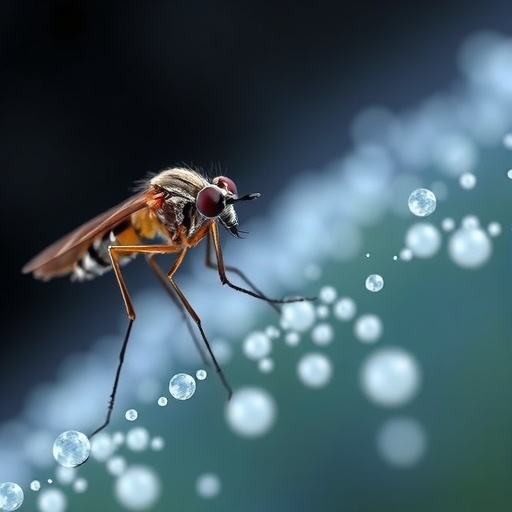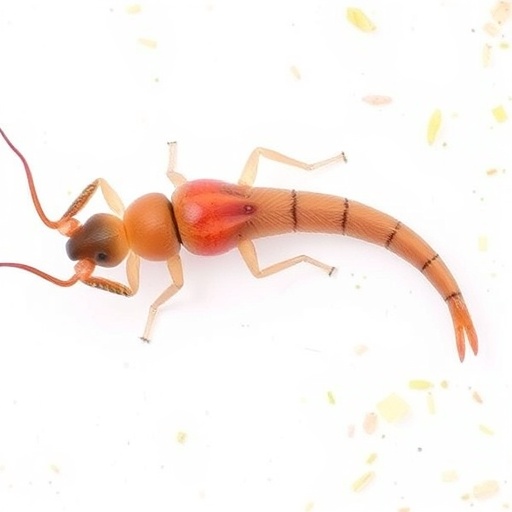In a groundbreaking study published in BMC Complementary Medicine and Therapeutics, researchers have unveiled the potent antimalarial properties of magnesium oxide (MgO) nanoparticles derived from the humble chamomile plant, scientifically known as Matricaria chamomilla. This experimental investigation underscored the potential utility of these nanoparticles in combating Plasmodium falciparum, the parasite responsible for the most severe and deadly form of malaria affecting millions of people globally.
The impetus for this research springs from the alarming rise of antimalarial resistance, which has made the treatment of malaria increasingly challenging. Traditional antimalarial drugs are losing their effectiveness, creating an urgent necessity for innovative therapeutic approaches. Researchers have turned to nanotechnology, a field that has shown promise in enhancing the efficacy of various drugs, to explore the application of chamomile-derived MgO nanoparticles as a viable alternative.
Growing chamomile plants is relatively easy, and its use has been prevalent in traditional medicine for centuries. The unique phytochemicals present in chamomile are known for their various health benefits. With this awareness, the scientists aimed to investigate whether these natural compounds could be leveraged to combat malaria. Through meticulous extraction and synthesis processes, they successfully fabricated MgO nanoparticles, encapsulating the extracts’ medicinal properties to evaluate their antimalarial activity against laboratory strains of Plasmodium falciparum.
The experimental design was rigorous, employing various in vitro assays to measure the antiplasmodial effects of the synthesized MgO nanoparticles. Results indicated a significant reduction in parasite viability, demonstrating that the nanoparticles interfere with the protozoan’s lifecycle. This finding was particularly notable considering the emerging challenges posed by drug-resistant Plasmodium strains, emphasizing the need for alternative therapeutic agents.
In addition to efficacy, safety remains a paramount concern in drug development. The research team conducted comprehensive toxicological assessments to evaluate the biocompatibility of the chamomile-derived MgO nanoparticles. The results were promising, as they indicated minimal cytotoxic effects on human cell lines, suggesting that the nanoparticles could offer a safe alternative for malaria treatment. This aspect of the study is critical, as safe therapeutic agents are essential to improving compliance and reducing adverse effects commonly associated with traditional antimalarial drugs.
The mechanisms by which MgO nanoparticles exert their antimalarial effects were also explored in the study. Researchers proposed that the nanoparticles could disrupt cellular processes in Plasmodium falciparum through multiple pathways, potentially including oxidative stress induction and apoptosis. This multifaceted attack on the parasite could lead to enhanced efficacy compared to conventional single-target antimalarial drugs, which often face limitations due to the parasite’s adaptive responses.
Furthermore, the ability to scale up production of MgO nanoparticles presents an added advantage for potential future applications. As production methodologies continue to improve, the possibility of manufacturing these nanoparticles in large quantities raises hopes for widespread deployment in malaria-endemic regions. This could further bolster efforts to eradicate malaria, a disease that has plagued humanity for centuries.
Besides the fundamental science of drug development, the study’s implications for public health are vast. As malaria continues to disproportionately affect vulnerable populations in low-resource settings, finding effective and accessible treatment options is essential. The potential integration of chamomile-derived MgO nanoparticles into existing malaria treatment protocols could result in enhanced treatment outcomes, particularly in regions where conventional therapies are becoming increasingly ineffective.
As interest in herbal medicine and natural compounds surges, this research contributes significantly to a growing body of literature advocating for the exploration of plant-derived pharmaceuticals. The successful demonstration of MgO nanoparticles derived from Matricaria chamomilla adds to the narrative that traditional medicine can yield modern medical breakthroughs, seamlessly merging ancient knowledge with cutting-edge technology.
Despite these encouraging findings, further research is necessary before therapeutic applications can be considered. Continued exploration into the pharmacokinetics and pharmacodynamics of these nanoparticles will play a crucial role in determining their viability as a mainstream treatment option. Moreover, clinical trials will be essential to fully assess safety and efficacy in human populations, ensuring that the benefits observed in vitro translate effectively to real-world scenarios.
In summary, this study marks a significant advancement in the quest for new antimalarial agents. By harnessing the properties of magnesium oxide nanoparticles derived from Matricaria chamomilla, researchers are paving the way for innovative approaches to tackle malaria in an era marked by drug resistance. The intersection of nanotechnology, botanical extracts, and public health creates a fertile ground for future discoveries, bringing hope to millions affected by this devastating disease.
The implications of this research are profound, particularly as the world continues to grapple with the dual challenges of infectious diseases and the growing threat of antimicrobial resistance. As scientists, policymakers, and healthcare professionals look toward the future, studies like this underscore the importance of fostering interdisciplinary collaborations and investments in research and development to ensure that we remain equipped to combat infectious diseases effectively.
In light of these findings, the scientific community is encouraged to pursue further investigations into the applications of nanotechnology in medicine. This study serves as a compelling illustration of how innovative approaches can breathe new life into traditional remedies, revealing untapped potential that may ultimately contribute to global health improvements.
Subject of Research: Antimalarial potential of magnesium oxide nanoparticles derived from Matricaria chamomilla
Article Title: Antimalarial potential of Matricaria chamomilla-derived MgO nanoparticles against Plasmodium falciparum strains: an experimental study.
Article References: Farzaneh, Z., Hanifian, H., Nateghpour, M. et al. Antimalarial potential of Matricaria chamomilla-derived MgO nanoparticles against Plasmodium falciparum strains: an experimental study. BMC Complement Med Ther 25, 360 (2025). https://doi.org/10.1186/s12906-025-05081-9
Image Credits: AI Generated
DOI: 10.1186/s12906-025-05081-9
Keywords: Matricaria chamomilla, MgO nanoparticles, Plasmodium falciparum, antimalarial, nanotechnology, drug resistance, phytochemicals, public health.
Tags: antimalarial properties of chamomileBMC Complementary Medicine and Therapeutics studycombating malaria resistancehealth benefits of chamomileinnovative malaria treatmentsmagnesium oxide nanoparticlesnanoparticle synthesis methodsnanotechnology in medicinephytochemicals in chamomilePlasmodium falciparum treatmenttherapeutic approaches for malariatraditional medicine and malaria





